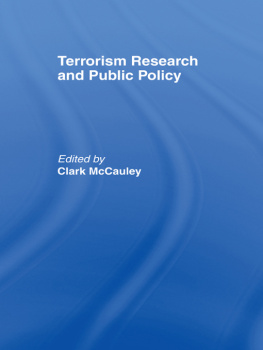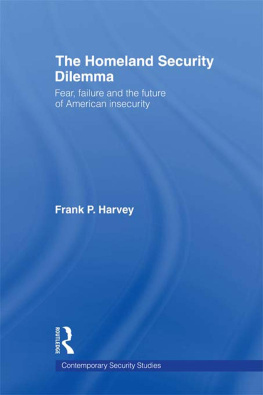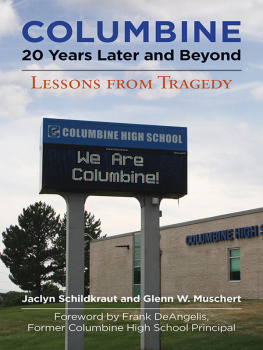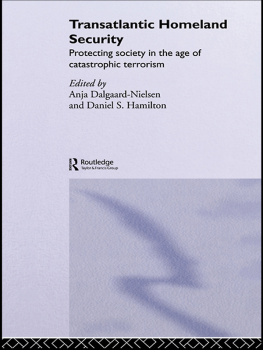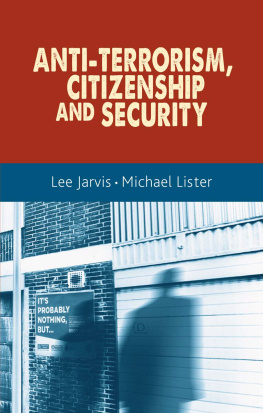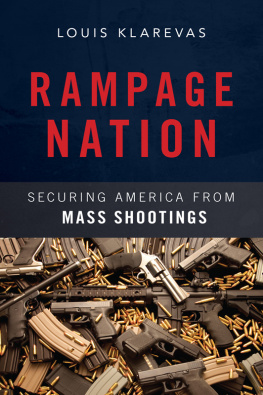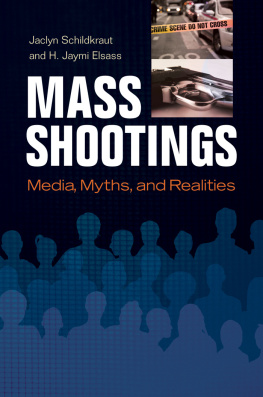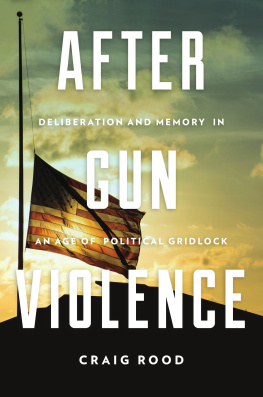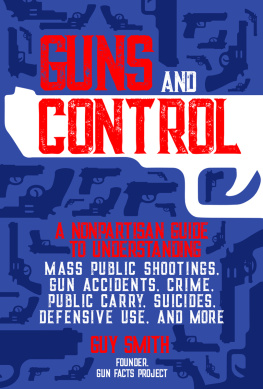Homeland InSecurity is a timely and comprehensive examination of the intersection of fear, conspiracy thinking, and violence. Drawing upon The Chapman Survey of American Fears, the authors present a rich and rigorous analysis of the vicious cycle linking fears, real or imagined, to physical attacks on fellow citizens, and government policy responses. This impressive and original volume puts into present-day focus Benjamin Franklins maxim regarding the tension between liberty and security. As dividing lines continue to harden between adversaries and political violence becomes more frequent, there has never been a greater need for such an instructive book. Anyone with even a passing interest in the roots of political violence in the contemporary United States should give this insightful book a close read.
Todd L. Belt, Professor and Director,
Political Management Program, The George Washington University
This distressingly timely book uses data from the Chapman University trend study of American Fears to describe what frightens us, especially fears of violence in public spaces like schools, churches, and shopping malls. Then the authors look to recent events and national data to see why those fears are not all that irrational. Finally, however, they describe some positive developments that may give us hope for the future.
Earl Babbie, Campbell Professor Emeritus in Behavioral Sciences, Chapman University
Homeland InSecurity
In this book, Ann Gordon and Kai Hamilton Gentry expertly illuminate how the public has a role to play in ensuring its own security.
Recent terror attacks and mass shootings in the United States have added urgency to the need for research on terrorism, the publics understanding of the precursors of terrorism and public preparedness for mass shootings and acts of terror. Unfortunately, most Americans do not understand what constitutes suspicious behavior or how to report it. Even more alarmingly, the public does not know what to do in the event of terrorist attack or mass casualty incident. Drawing on five years of the Chapman Survey of American Fears (CSAF), a nationally representative survey, and real-world events, Homeland InSecurity offers actionable solutions on how to educate the public to overcome fear and play an active role securing schools, public venues and the homeland itself. The book addresses proposals by survivors and victims families to reduce violence through campaigns to deny shooters the notoriety they seek and reduce access to guns. It also explores the rise of activism among survivors of school shootings and their quest to educate the public and end school shootings.
Homeland InSecurity will be essential for scholars, students, and policy makers.
Ann Gordon is associate professor of political science at Chapman University. She is the director of the Babbie Social Science Research Center and the Ludie and David C. Henley Social Sciences Research Laboratory. She is Co-PI of the ongoing Chapman Survey of American Fears and co-author of Fear Itself: The Causes and Consequences of Fear in America.
Kai Hamilton Gentry is a recent graduate of Chapman University with a B.A. in political science. He began working on the Chapman Survey of American Fears in 2015, and served as the assistant director of the Henley Social Sciences Research Laboratory. He plans to pursue graduate work in counterterrorism analysis.
Routledge Research in American Politics and Governance
Reforming the Presidential Nominating Process
Front-Loadings Consequences and the National Primary Solution
Lisa K. Parshall
Public Debt and the Common Good
Philosophical and Institutional Implications of Fiscal Imbalance
James Odom
Removal of the Property Qualification for Voting in the United States
Strategy and Suffrage
Justin Moeller and Ronald F. King
The Rise of the Republican Right
From Goldwater to Reagan
Brian M. Conley
Interest Group Design
The Foundation and Evolution of Common Cause
Marcie L. Reynolds
Pop-Up Civics in 21st Century America
Understanding the Political Potential of Placemaking
Ryan Salzman
A Tale of Two Parties
Living Amongst Democrats and Republicans Since 1952
Kenneth Janda
HomelandInSecurity
Terrorism, Mass Shootings, and the Public
Ann Gordon and Kai Hamilton Gentry
Homeland InSecurity
Terrorism, Mass Shootings, and
the Public
Ann Gordon
and Kai Hamilton Gentry
First published 2021
by Routledge
52 Vanderbilt Avenue, New York, NY 10017
and by Routledge
2 Park Square, Milton Park, Abingdon, Oxon, OX14 4RN
Routledge is an imprint of the Taylor & Francis Group, an informa business
2021 Taylor & Francis
The right of Ann Gordon and Kai Hamilton Gentry to be identified as authors of this work has been asserted by them in accordance with sections 77 and 78 of the Copyright, Designs and Patents Act 1988.
All rights reserved. No part of this book may be reprinted or reproduced or utilised in any form or by any electronic, mechanical, or other means, now known or hereafter invented, including photocopying and recording, or in any information storage or retrieval system, without permission in writing from the publishers.
Trademark notice: Product or corporate names may be trademarks or registered trademarks, and are used only for identification and explanation without intent to infringe.
Library of Congress Cataloging-in-Publication Data
A catalog record for this title has been requested
ISBN: 978-0-367-85925-1 (hbk)
ISBN: 978-1-003-01580-2 (ebk)
Typeset in Baskerville
by MPS Limited, Dehradun
To our mothers, Jill and Kathie, for all they have done for us.
Contents
List of figures and tables
1 Introduction
2 Terrorism
3 Mass Shootings
4 Conspiracy Theories and Mass Shootings
5 Conclusion
Index
Figures
2.1 Barriers to Reporting
2.2 You Notice, but Do You Report?
2.3 Terror Attacks and Foiled Plots in the United States, 20142018
3.1 Mass Shootings in the United States by Year
3.2 Fear of Mass Shootings in the United States by Year
Tables
3.1 Buying a Gun Out of Fear by Media Use
3.2 A table depicting familiarity with Stop the Bleed campaign and active shooter training by demographic characteristics
4.1 OLS Regression Predicting Belief in Sandy Hook/Las Vegas/Parkland Conspiracies by Media Use
4.2 Belief in the Sandy Hook and South Dakota Crash Conspiracies by Demographics
The authors are grateful to so many people who made this book and the Chapman Survey of American Fears possible. The survey is hard work, but Anns Co-PIs in Chapmans Sociology department, Ed Day and Chris Bader, bring an interdisciplinary perspective and make the project both fun and rewarding. Thanks are also due to Ed for reading earlier versions of this manuscript and providing helpful feedback.
Also, at Chapman, wed like to thank President Daniele Struppa, Provost Glenn Pfeiffer, Dean Jennifer Keene, and Sarah Gordon for their unwavering support of undergraduate researchers, the fear project, and the Earl Babbie Research Center, at which the CSAF is based. Greg Walswick has gone above and beyond in providing administrative support to the Babbie Center, as has Talisa Flores in support of the Henley Lab.



